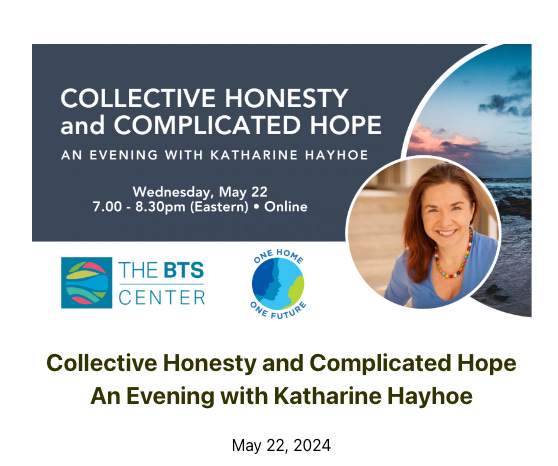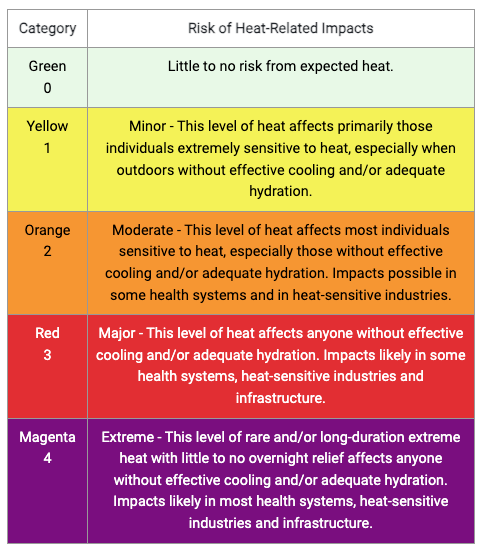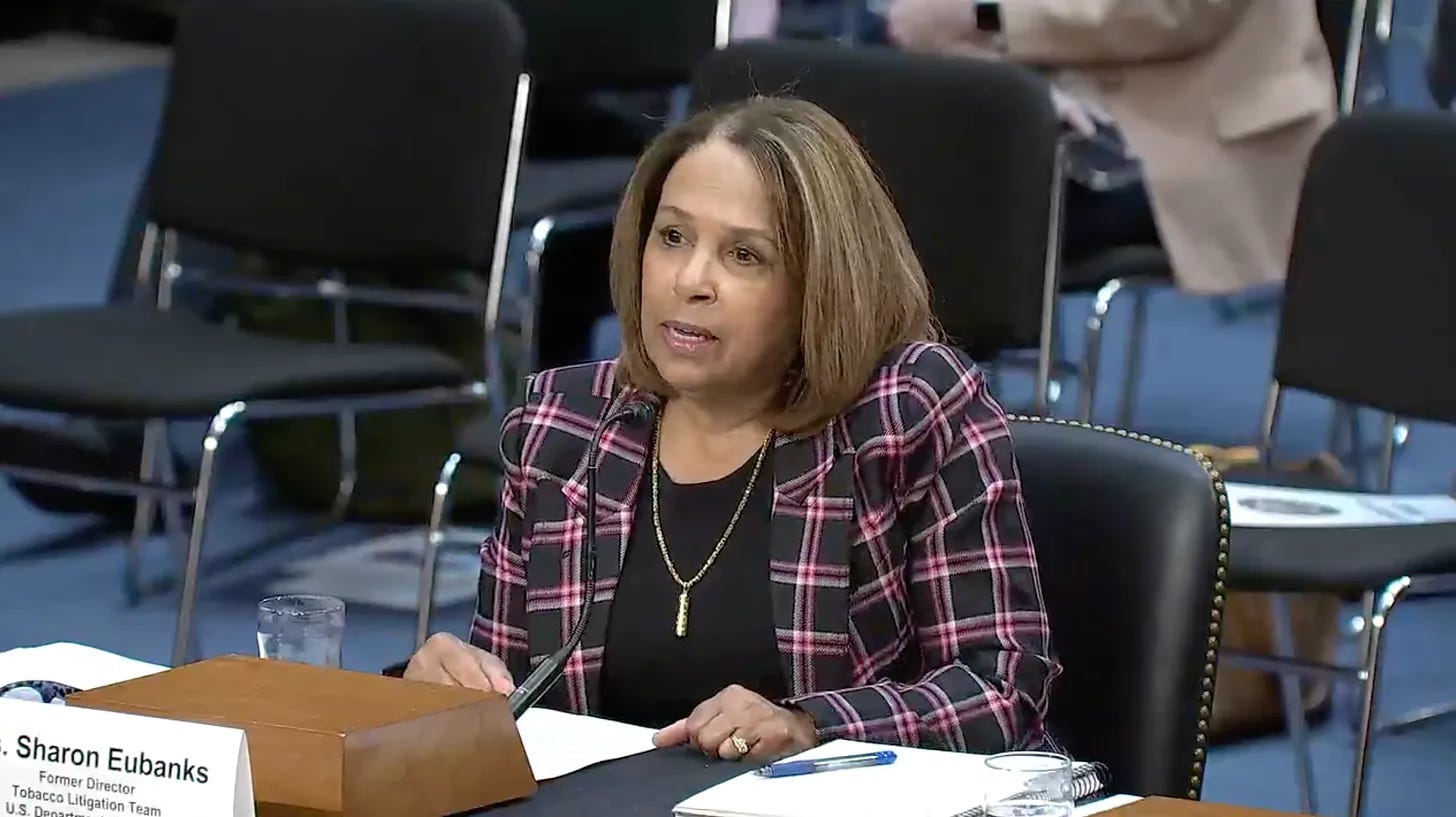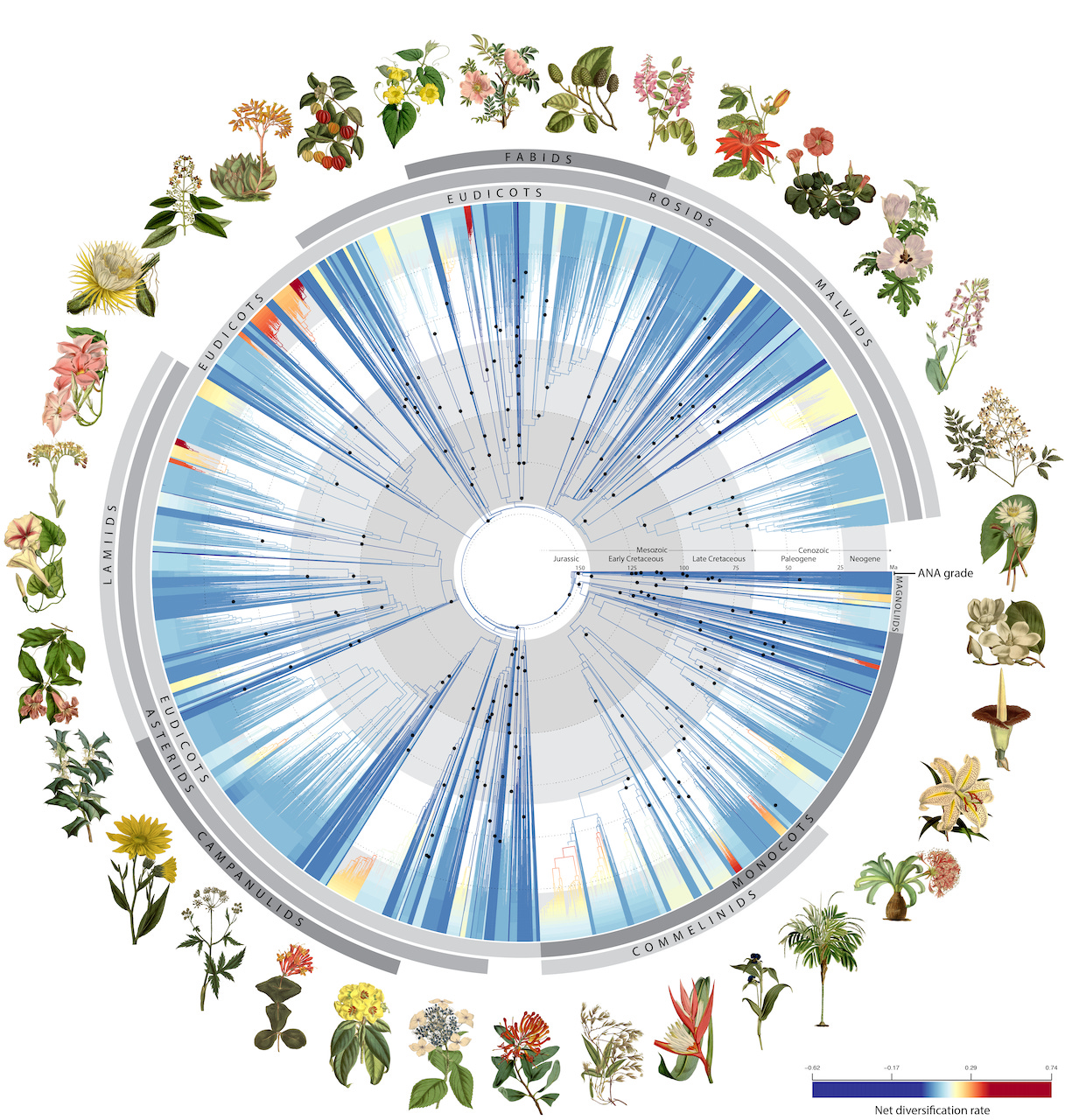Refugia Newsletter #67
Heat, deceit, plastics, climate in film and TV, Green Islam, flower science, and voting.
Refugia News
Hooray! I turned in my grades on Thursday, so the academic year is officially completed. That was year number 28 for me at Calvin University. For commencement, faculty sit in seniority order, and I am now—gulp—very close to the front of the line. Which means I get an excellent view of proceedings, including the graduates’ footwear as they parade past to receive their diplomas. It’s always lovely to cheer young people on as they step (ha, get it? footwear reference?) into a new chapter of life, but of course, we’re also sad to say goodbye to our seniors. Well, we send them off with a generous dose of blessing.
This is how close I am to the dais now, thanks to my seniority on the faculty!
There’s me in my regalia with two of our many fabulous graduates.
And so, summer begins.
In the next two editions of this newsletter, I will be coming to you from… Switzerland, the Netherlands, and then Scotland. I hope to bring you plenty of interesting climate-and-refugia-related stories. Meanwhile, we have news to deal with.
But first, I commend to you a very cool online event sponsored by the good people at the BTS Center in Maine. The event, titled “Collective Honesty and Complicated Hope,” features Katharine Hayhoe and some fabulous panelists. There’s a small fee, but I expect the evening will prove entirely worthwhile.
This Week in Climate News
On to the news. Today we’re going to talk about heat, deceit, and plastics.
Heat. With summer here in the Northern hemisphere, unfortunately we can expect more extreme heat. The National Weather Service/NOAA and the CDC have developed a helpful tool to assist decision-makers (and ordinary folks) in tracking the threat of extreme heat in their area. Did you download the EPA Air Quality app to your phone last year? This heat risk tool is similar, but it’s still in a kind of beta stage.
The scale used to describe heat risk. Also, there are cool (I mean, hot?) interactive maps on the site.
In extremely distressing news, in the oceans, “pulses of extreme heat” have been so frequent and intense that creatures are experiencing massive die-offs. Bob Berwyn of Inside Climate News reports:
Over the past several years, the temperature of the Earth’s oceans have been spiking high enough to trigger numerous die-offs of marine species, killing millions of corals, fish, mammals, birds and plants. Those mass die-offs also have sent a wave of emotional trauma washing over some researchers watching their life’s work vanish before their eyes.
Even if the heat pulses come and go, they can be extreme and damaging enough to kill a population. Frequency, of course, just makes it all worse and more permanent. What we’re seeing now is especially dismaying because the heat exceeds what climatologists were projecting even in worst-case scenarios.
Hotter oceans not only threaten sea life, of course, but also life on the coasts. Researchers are expecting a “very active hurricane season.”
Deceit. I know I write often about the fossil fuel industry’s many misdeeds, but it is so important to understand this industry’s past and ongoing nefariousness. Oof. It really is hard to stomach. The recent US Senate Budget Committee hearings are the latest development, exposing once again how the industry has long known exactly what kind of havoc their products create; nevertheless, Big Oil continues to pour massive amounts of money into deceiving the public so that they can continue to profit from fossil fuels.
Rebecca Leber sums up the senate hearings for Drilled:
The hearing, chaired by Sen. Sheldon Whitehouse (D-RI), zeroed in on the industry’s “denial, disinformation, and doublespeak.” It builds off of a new 65-page bicameral report and 4,500 new documents subpoenaed from the fossil fuel industry. These include internal climate communications and presentations from ExxonMobil, BP, Chevron, Shell, the American Petroleum Institute, and the Chamber of Commerce, dating from just before the Paris agreement adoption in 2015 to the end of 2021. …
There is now an extensive paper trail, compiled by researchers and journalists in recent years, dating back to the 1950s on the oil and gas industry’s role in obstructing climate action. However, the bulk of these documents have often covered decades-old events. This new tranche is related to more recent policy debates, including frank exchanges on rising methane emissions, the role of carbon capture and storage, and the industry’s influence at top universities.
Switching to further coverage of the hearings, Emily Atkin and Arielle Samuelson of Heated gather some specific takeaways from the documents, among them:
oil companies know they can’t meet their public climate goals
oil companies are aware that gas is as bad as coal
oil companies know carbon capture doesn’t work.
On the very same day the hearings were taking place, as if to conveniently demonstrate the industry’s standard playbook, “former U.S. Energy Secretary Ernest Moniz on Tuesday released a favorable report on U.S. natural gas and liquified natural gas (LNG), funded by the natural gas industry.” The report claims that natural gas is an important “long-term” energy strategy. However, this article by Phil McKenna in Inside Climate News neatly dismantles the report’s claims. And this piece by Amy Westervelt furthers explains why the industry’s claims about LNG are misleading and therefore dangerous.
The good news here is that the more the industry’s playbook is exposed for the fraud that it is, the more public awareness we achieve. And public awareness is an important way to erode the industry’s power. As Bill McKibben wrote in his newsletter, “The hearing also sent a deeper signal—which is that the power balance, at least as long as Democrats remain in power, is slowly shifting against what was long the country’s most powerful industry.”
Eubanks testifying. Image credit: Screenshot/Senate Budget Committee/Heated
The other good aspect of this hearing is that establishing the industry’s deliberate deception helps forms the basis for legal actions. Most pointedly, Sharon Eubanks, the former US Department of Justice attorney who won the racketeering case against tobacco companies, testified at the senate hearing that we now have enough evidence to use the RICO statute against fossil fuel companies. Will the DOJ do it? I’m guessing: no. At least not before the election.
Meanwhile, though, climate-related court cases around the world more than doubled between 2017 and 2022, and, according to the UN, “the body of legal precedent grows, forming an increasingly well-defined field of law.” A group of older Swiss women recently won a case claiming that the Swiss government violated their rights by not meeting its own emissions reduction goals. According to climate/legal reporter Katie Surma, the case has wider implications because it confirms “that governments have human rights obligations when it comes to addressing climate change.”
Some cases succeed and some fail, and that’s to be expected. This is a developing area of law, and people are trying to figure out what sticks and what doesn’t.
Plastics. Wouldn’t it be great to have a global plastics treaty, wherein all the countries of the world agree to drastically reduce plastic production and waste? Well, the UN has been working on this since 2022 when 175 nations gathered for the first of a bunch of meetings. There was another gathering last month in Ottawa, Canada, and another scheduled for later this year for Korea. How is it going? Eh. Not great.
Unsurprisingly, the people who make plastics (sigh—plastics are made from fossil fuels) have been thoroughly represented at the talks, and they are not big fans of limits on production. Never mind that the entire lifecycle of plastics is problematic: carbon emissions, toxic pollution, and waste, including the microplastics that are literally everywhere, even inside our bodies. From Hiroko Tabuchi of the New York Times:
According to the U.N. Environment Program, the world produces more than 430 million metric tons of plastic a year. Two-thirds are short-lived products that soon become waste.
Recycling? Also not going well. Less than 10% gets recycled. New recycling technologies are hitting snags. And according to Eve O. Schaub in her disturbingly persuasive Earth Day piece in the Washington Post, there’s just no good way to recycle plastic:
Unlike paper, glass and metal, plastic is not easily, efficiently turned into new products. What passes for “recycling” plastic is costly, energy-intensive and toxic. On top of all that, the process requires the addition of a shocking amount of new virgin plastic — around 70 percent — to hold the newly formed plastic item together. As a result, only about 5 percent of plastic gets “recycled” (or, more accurately, “downcycled” into a product of inferior quality). Compare that with a 68 percent recycling rate for paper and cardboard.
(Note: Schaub’s source for that 5% number is more recent and US-based compared to the 10% figure noted above.) Even recycling processes lead to more microplastics in the environment and more toxic substances we don’t even understand. Ugh. I’m not happy about this, because plastics are convenient—and ubiquitous. But there it is. The “only real” solution, Schaub says, is “making a whole lot less of it.”
Deeper Dive
Well, that was a whole lot of bummer news. Sorry about that. How about something fun for a deeper dive? All right, then. Allow me to introduce you to a really cool outfit called Good Energy. Nope, it’s not a renewables contractor or something. It’s a nonprofit consulting firm that advises Hollywood creators on how to depict climate change accurately and usefully in film and scripted TV. I’m a big admirer of the founder, Anna Jane Joyner, who even at a young age has a long track record in climate work.
Another person I admire, David Roberts, welcomed Joyner as a guest on his terrific Volts podcast. Here’s how Roberts set the stage for the interview:
This week, Good Energy, in collaboration with the Buck Lab for Climate and Environment at Colby College, released a new report on the visibility of climate change in film. Using the “climate reality check,” a kind of climate twist on the Bechdel test, it determined whether, in the world of the movie, a) climate change exists and b) a character knows it. Just 9.6 percent of the movies passed the test, and in only 3.6 percent was climate mentioned in more than one scene.
This article in Forbes gives further detail on the research that Good Energy has done. Here are some things they found by analyzing movies and using the “climate reality check tool.”
Of over 37,000 scripts (film and TV) made between 2016 and 2020, only 2.8% passed.
Of the 250 most popular films released between 2013 and 2022, only 24 passed the test (9.6%).
Of this year’s 31 Oscar-nominated films, only 3 passed (also 9.6%).
Joyner offers a fascinating inside look at how Hollywood creatives work. In general, she says, writers are themselves worried about climate change. They just need help figuring out how to write well about it. The goal is not to preach, and not even to write stories all about climate change—but instead, to create compelling stories in which characters acknowledge climate reality.
Roberts and Joyner discuss getting away from the usual “shame narrative” where some character nags everyone about plastic straws. Or the usual “apocalypse” story trope where extreme disaster is the premise. Joyner describes a set of other terms they use, like “climate mention,” “climate world,” “climate placement,” and “climate character,” and explains loads of examples from movies like Mission Impossible, Barbie, First Reformed, and the Apple TV series Extrapolations.
Apparently, Mission Impossible: Dead Reckoning passes the climate reality test. The test is, intentionally, a low bar. Baby steps!
The idea behind Good Energy’s work is to normalize talking about climate realities in our story telling. Joyner and Roberts have plenty of interesting things to say about the power of stories and of film media. I highly recommend listening to the Volts podcast episode.
Refugia Sighting
To follow up on my little piece last time on the new Muslim document Al-Mizan: A Covenant for the Earth, I’d like to point to this article by Sui-Lee Wee for the New York Times on “Green Islam.” Wee features proponents of the Green Islam movement in Indonesia—not the most obvious place for a green movement, since Indonesia is economically dependent on not-at-all green industries. However, Muslim leaders are inspiring the faithful, including Grand Imam Nasaruddin Umar. Wee writes:
[Umar] is not alone in this country of more than 200 million people, the majority of them Muslims, in trying to kindle an environmental awakening through Islam. Top clergy have issued fatwas, or edicts, on how to rein in climate change. Neighborhood activists are beseeching friends, family and neighbors that environmentalism is embedded in the Quran.
Image credit: Ulet Ifansasti for the New York Times.
Another leader interviewed pointed out that for Muslims, religious leadership is particularly influential:
“People will not listen to laws, they don’t care,” said Hayu Prabowo, the head of environmental protection at the Indonesian Ulema Council, the nation’s highest Islamic authority. “They listen to religious leaders because their religious leaders say you can escape worldly laws, but you cannot escape God’s laws.”
Finally, what’s a refugium without flowers? If you are enjoying spring flowers right now—or any flowers, ever—you might appreciate this article, which reports on some serious developments in flower science:
A study published today, April 24, in the journal Nature and led by the Royal Botanic Gardens, Kew, unveiled the most comprehensive understanding of the evolutionary history of flowering plants to date.
The research, which analyzed 1.8 billion letters of genetic code from more than 9,500 species, clears up some of the mystery surrounding the rise of flowering plants. Much like a periodic table, this tree of life shows how plants are related.
To ensure the widest possible use of this data, the tree and all its underlying data have been made openly and freely accessible to all through the Kew Tree of Life Explorer.
I admit, I included this story mostly so I could share this gorgeous graphic. Image credit: Tree of Life for flowering plants, courtesy of RBG Kew.
I adore Kew Gardens. And if you ever want to read all about how plant research gets done, I highly recommend The Plant Messiah by Carlos Magdalena, a Kew Gardens researcher. Great summer read!
The Not-So-Wayback Machine
Do you know young people who are so disgusted with American politics they don’t want to vote? Yeah, so do I. Here’s the essay I wrote last week for the Reformed Journal blog, in which I attempt to make a case for casting one’s ballot. It’s called “A Vote is not a Valentine—or a Virtue Test.”
It seems to me people have all kinds of unhelpful notions about what a vote means. And that can lead to them choosing not to vote, usually for either (or both) of two reasons. 1. They don’t think their vote matters. 2. They want to signal their virtue.
Let’s address these one at a time.
I don’t tell anyone who to vote for in the piece. If you’re a climate voter, though, this recent article is one way to help clarify things, at least at the presidential level.
For a more sophisticated and global perspective on this issue, I recommend this essay by Rev. Jim Antal, “The Sacred Right to Vote.” Rev. Antal, a distinguished veteran of the climate fight, makes a compelling moral argument for voting in a year when it matters more than ever—to the whole planet.
That’s it for this time. If all goes well, I’ll write you next time from the Swiss Alps. Till then, be well.
As always, bold type in quotations is added unless otherwise indicated.











